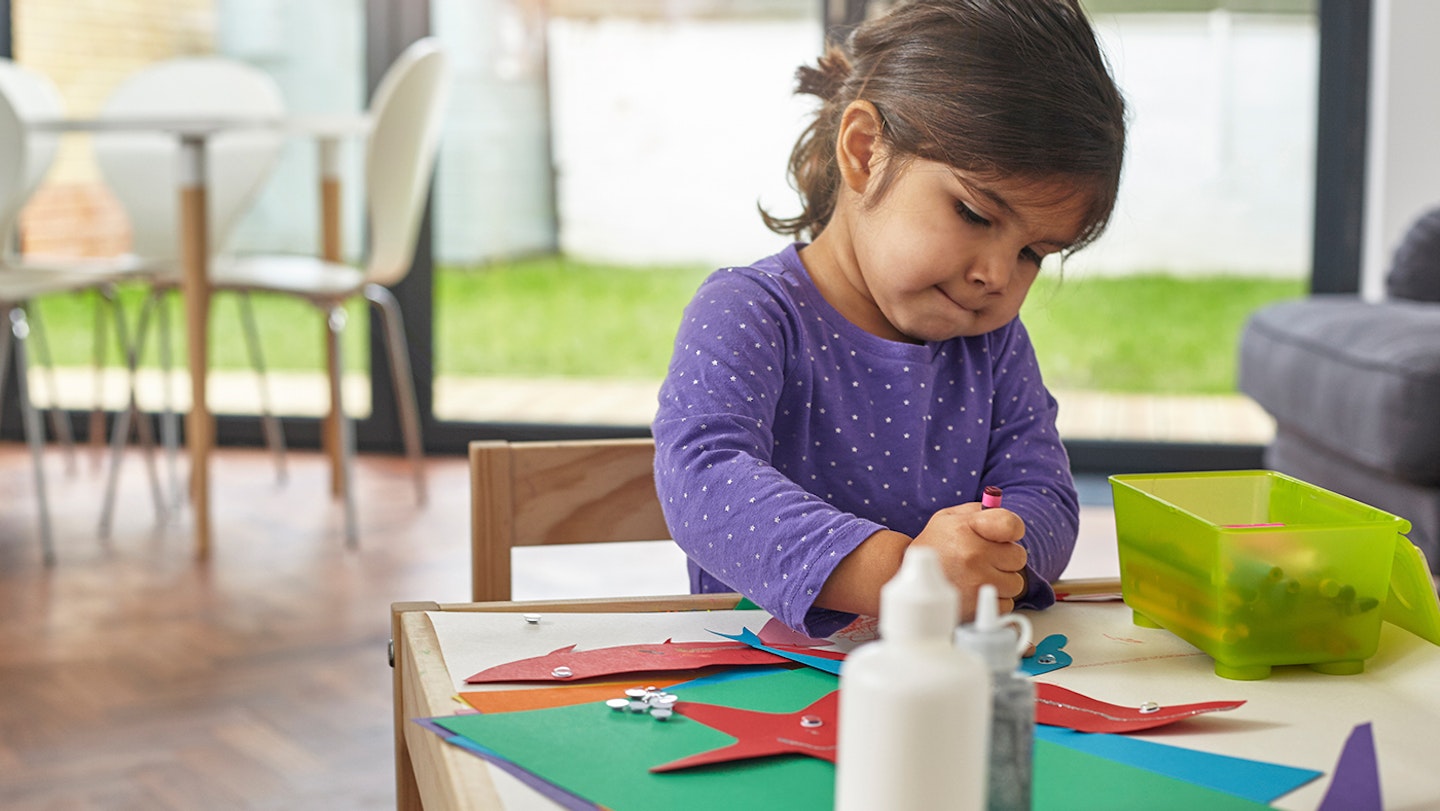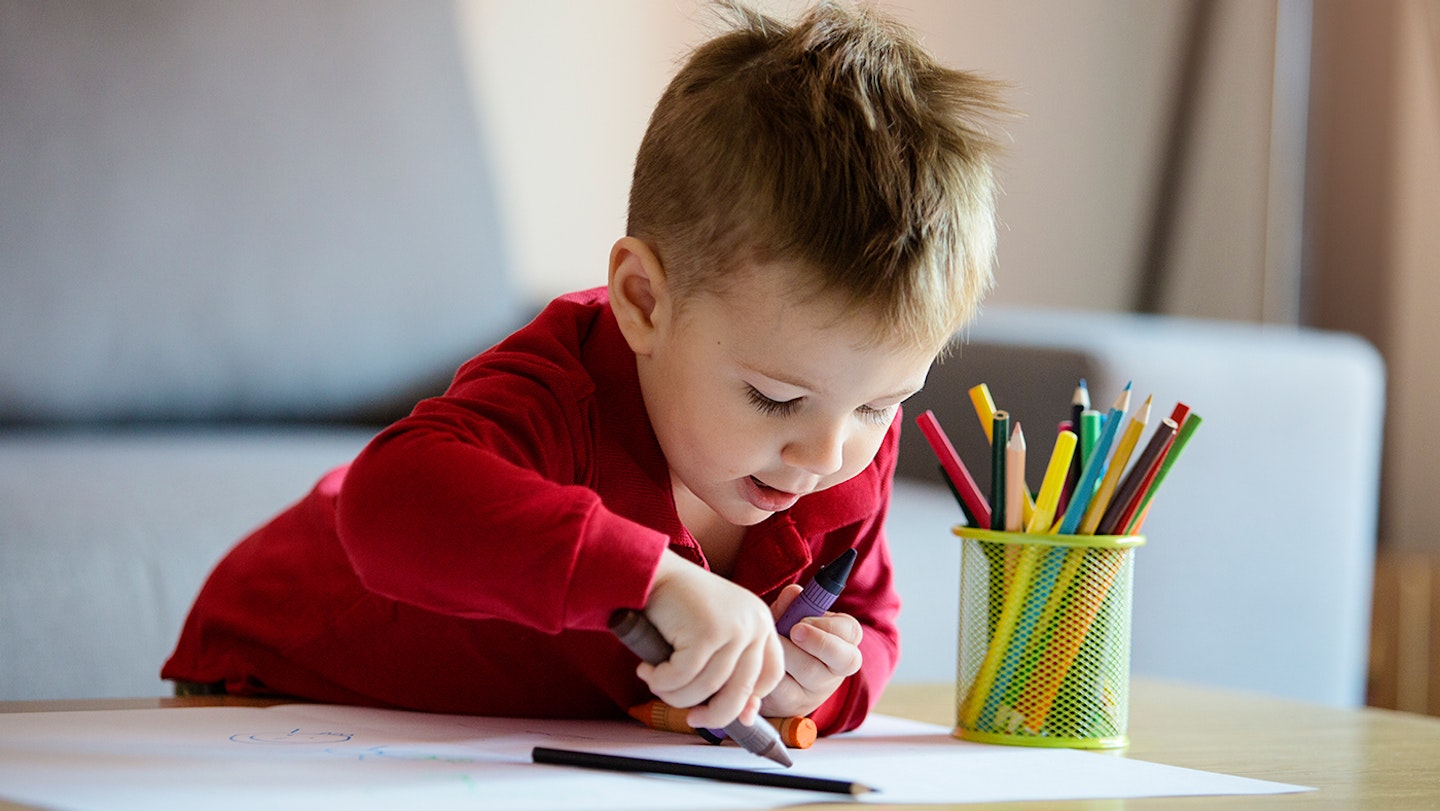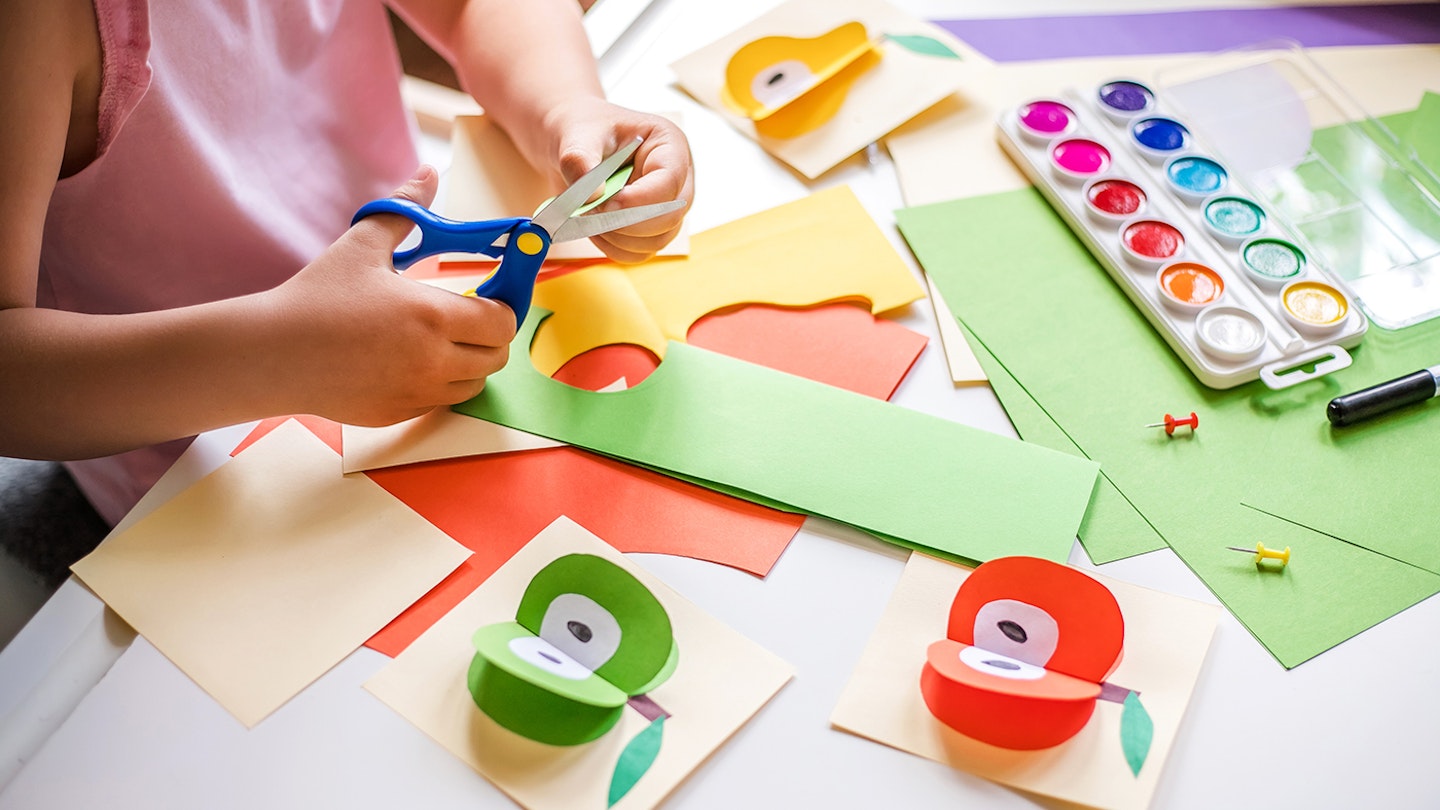It's likely that you've already introduced your little one to the joy of crafting, but if you're in need of a little reminder of the benefits after you've separated playdough and swept up glitter, Virginie Charles-Dear, Founder and CEO of toucanBox explains more.
Introducing crafting to young children
Give young children unlimited access to art materialslike paper, pencils, crayons, paint, playdough, pipe cleaners, and child-friendly scissors. You can also give them recyclable household materials like milk bottles, toilet paper, egg cartons and butter tubs to make things with.
At this age, it’s not about having a beautifully finished product, but about giving them the opportunity to explore their imagination with the materials they have at hand. You can encourage them to make something based on a story you have read together or something that fascinated them on a nature walk, for example.

Why is creativity so important?
Simply put, creativity helps to develop children’s brains and it makes them happy. In the early years the brain makes billions of new connections with every new piece of knowledge acquired. By engaging in creative activities like crafting, dance or roleplay they make more connections.
Furthermore, when children focus on a creative activity they become more mindful and relaxed. In this state, our brain releases happy hormones like endorphins, serotonin, and dopamine which promote positive feelings like pleasure, happiness and love. These are essential for mental wellbeing.
What type of crafts are good for children?
Young children benefit most from crafts that help them to practice holding a pair of scissors and making small snipping motions, rolling out playdough and modelling clay, threading beads, tearing paper, as well as using crayons and pencils.
Some easy ideas are fruit and vegetable stamping, collages using magazine cut-outs or bits of coloured paper cut into shapes, toilet roll binoculars or puppets, painted pasta crafts or paper plate crafts (you can make hundreds of things from paper plates - even a paper plate dinosaur!).

The benefits of crafting with children
Language development
Reading to children is proven to help develop their vocabulary. But did you know that making arts and crafts encourages children to use words for colours, shapes, textures and a range of verbs too? They also learn words to describe what they are making, whether it be fluffy, smooth, sparkly, or sticky.
Fine motor development
Modelling clay, holding a paintbrush, scribbling with a crayon, cutting with scissors, squishing and pulling play-dough, and drawing shapes helps children to strengthen the muscles in their hands and fingers. This in turn helps them with everyday things like eating with a knife and fork, tying shoelaces, and writing.
Problem-solving skills
Children have to make lots of little choices during the crafting process. They look at a lump of clay and have to determine how to turn that clay into a pot. If a chosen material doesn’t work for a project then they work to discover what could be used instead. It is fascinating to see children learn which materials and techniques can be used in their craft projects. They learn from years of creating arts and crafts what does and doesn’t work.

Concentration and patience
Many craft projects require learning a new technique, which requires a lot of patience from famously fidgety kids! However, children soon learn that the more they practice a technique the better they can do it in the future and that their patience will be rewarded with a creation all of their own. It may not be the perfect polished piece by grown-up standards, but it has real value to the child and is well worth the time spent waiting for paint to dry or for clay to set.
Most craft activities have multiple steps that need to be followed, which teaches children to follow instructions and to follow through on their projects. Practising these skills through crafting at home helps children to apply these skills in the classroom and become more attentive, patient learners.
Helping children make the most of crafting
Start by keeping it simple, using just a few materials. Be guided by your child's interests and let them craft for as long as they like. Sometimes they might want to craft for five minutes, other times they may spend up to or over half an hour on their craft project. Remember that while many art projects come with set instructions, your child may want to explore and invent on their own and that that’s ok too. If the instructions say to use blue paint but your child wants green paint, then let them experiment and see what happens. This way children learn to trust and explore their imagination and having creative control heightens their sense of accomplishment and makes their work unique to them.
